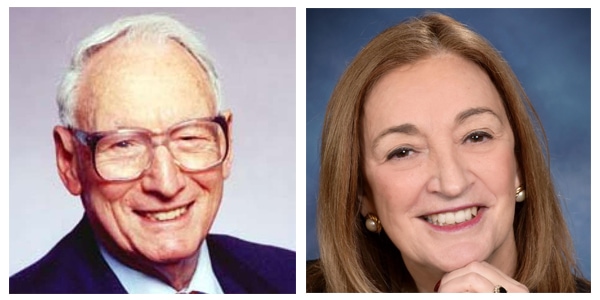
The idea of an investment fund that trades on an exchange like a stock—a leap into an unforeseeable future—gave birth to one of the most lucrative and popular investment vehicles in a quarter of a century.
The first modern exchange-traded fund (ETF) was launched in Canada in 1990, when an instrument that tracked the TSE 35 index traded on the Toronto Stock Exchange. But nobody in the 1990s expected them to become the market they are today.
Two of the pioneers behind the first US ETF remember the skepticism and excitement that accompanied the debut, three years later, on the American Stock Exchange (Amex) of Standard & Poor’s Depositary Receipts (SPDR, Spider, Spyder or SPY), still today among the world’s most-traded ETFs.
Nate Most, at the time head of product development at the Amex, wanted to create a competitor to the S&P Futures that would trade as effortlessly as a stock, recalls Kathy Cuocolo, who led the structural operational design of the product within her servicing division at Boston-based State Street Bank. Cuocolo is currently president of Syntax, a custom index provider and investment management firm that innovates in the indexing space.
“I mostly remember that my peers were very, very skeptical of the time and money we were putting into something that didn’t yet exist,” Cuocolo says. “One person said to me, ‘Why are we spending millions on a third-rate exchange that isn’t paying us any revenue?’” She remembers her colleagues Glenn Francis and Mary Fenoglio, and especially Marsh Carter and Ronald Logue, former heads of State Street, “for stepping outside the traditional banking business lines.”
Over the years, exchange-traded products have become ubiquitous, as both individuals and large investors shift from active to index management for convenience and greater certainty.
“The ETFs have gone from what was an interesting thing in 1993 to one of the top financial innovations in the last 25 years,” says Jim Ross, who participated in the birth of SPDR and is now head of global SPDR business at State Street Global Advisors, which has $2 trillion in ETF assets under management.
Following the dot-com bubble in the early 2000s, the financial crisis in 2008 gave an unhoped-for boost to indexing. Some of today’s largest ETFs—such as iShares, SPDR Gold Shares and Vanguard MSCI Emerging Markets ETF—saw more active trading in those years.
“Probably a large catalyst was the disappointment of many investors in the performance of their active managers during the global financial crisis, where they either didn’t outperform or didn’t anticipate what was on the horizon,” says Richard Powers, head of ETF product management at Vanguard, which has some of the lowest expense ratios in the sector.
The move from commission-based to fee-based advice has accelerated ETF adoption over the last 15 years or so, Powers says. ETFs are index trackers and therefore have a lower cost ratio than mutual funds, which are mostly actively managed. Also, ETFs can be traded throughout the day.
“The future marketplace of the ETFs is wide open,” Syntax’s Cuocolo says. There are many categories today of ETFs: precious metals, leverage, inverse, debt, currency and commodities, to name a few.
And now there is an ETF that tracks the global ETF industry. In late April, Toroso Investments turned to Bats to launch TETF, which invests in companies in the ETF industry, including data and liquidity providers, trading and custody platforms, and the usual ETF issuers, index providers and exchange operators. At the end of February, ETFs around the world held a combined $3.7 trillion dollars in assets under management, according to researcher ETFGI, a new record. That’s expected to reach $5 trillion by 2020, according to Etfdb.com.



